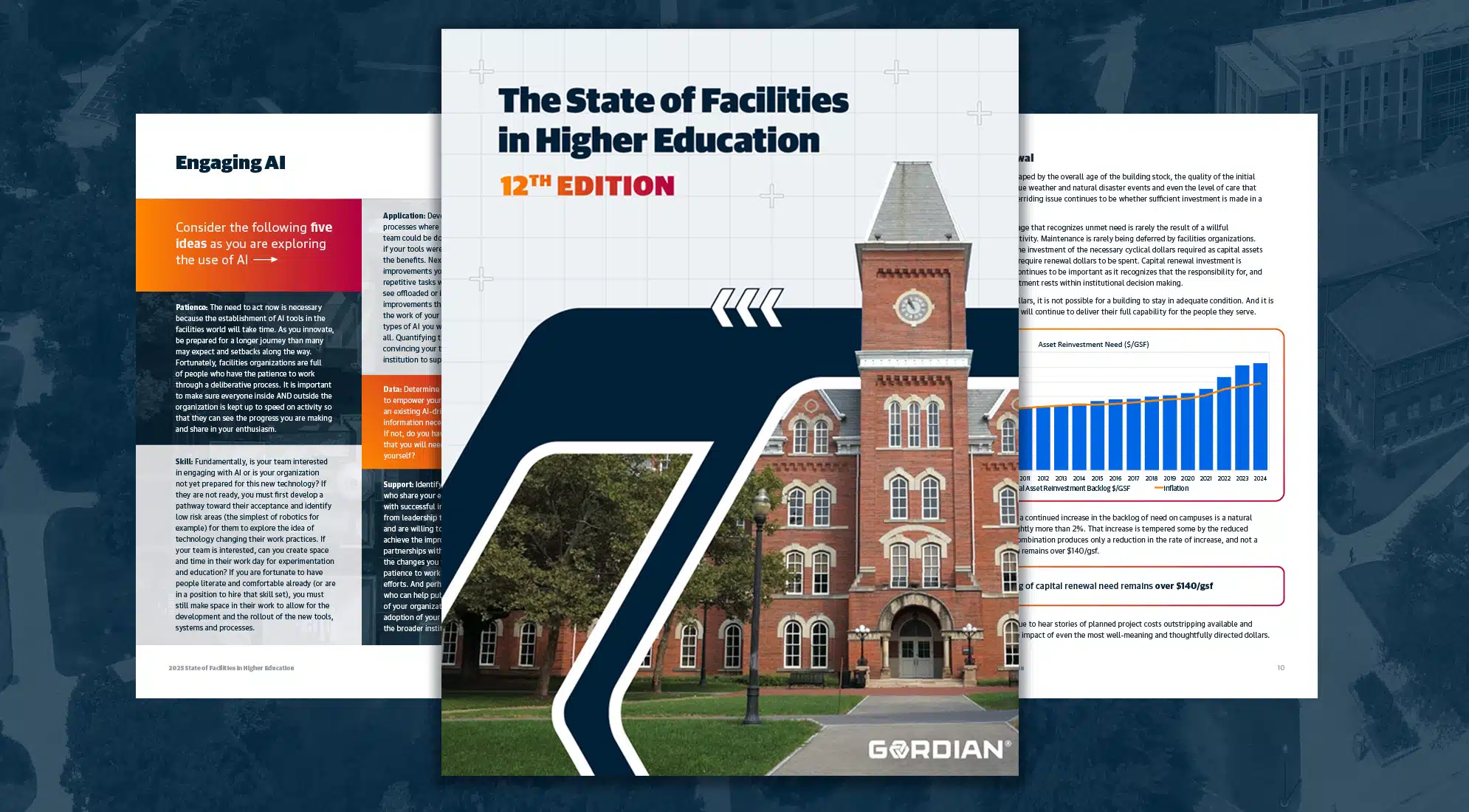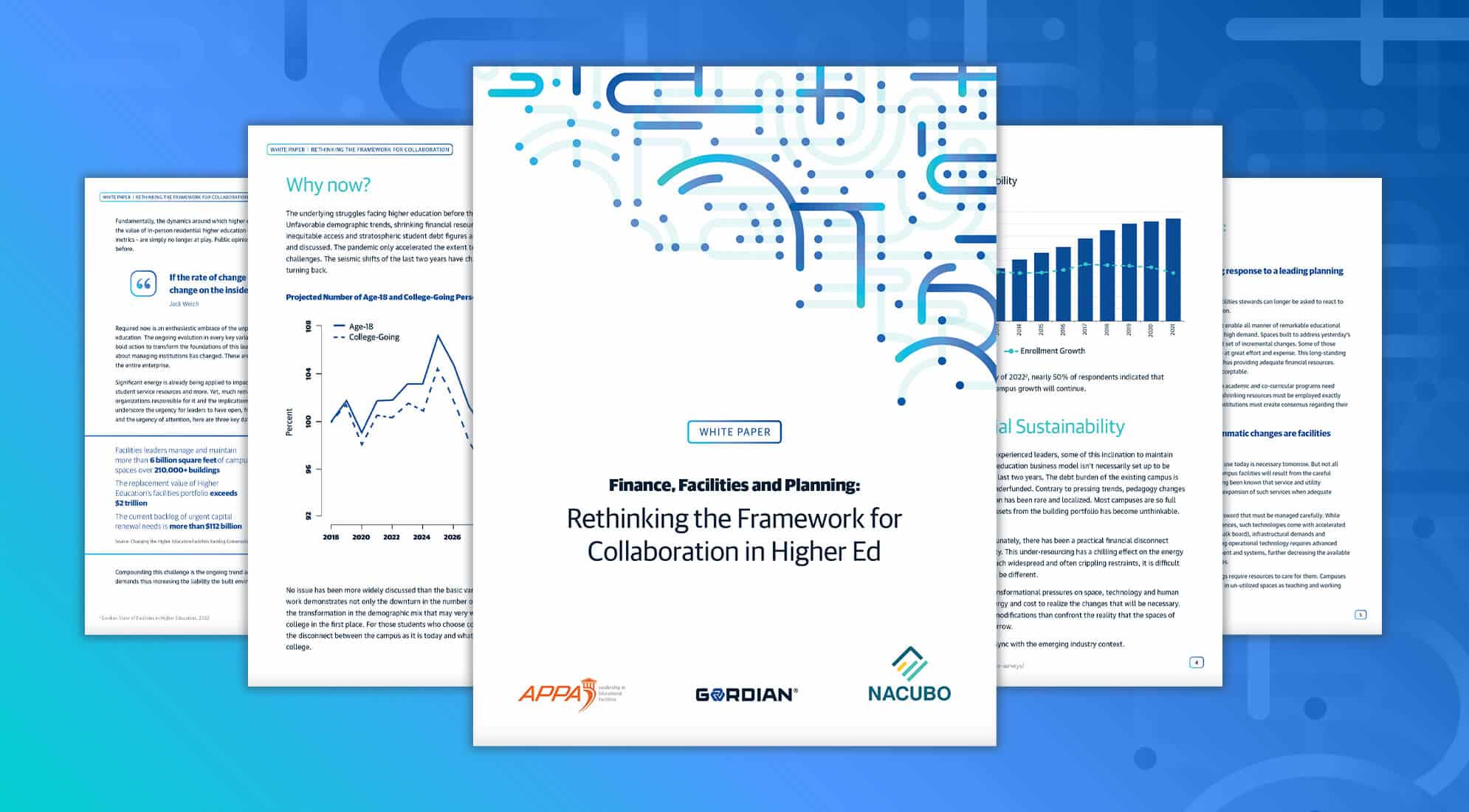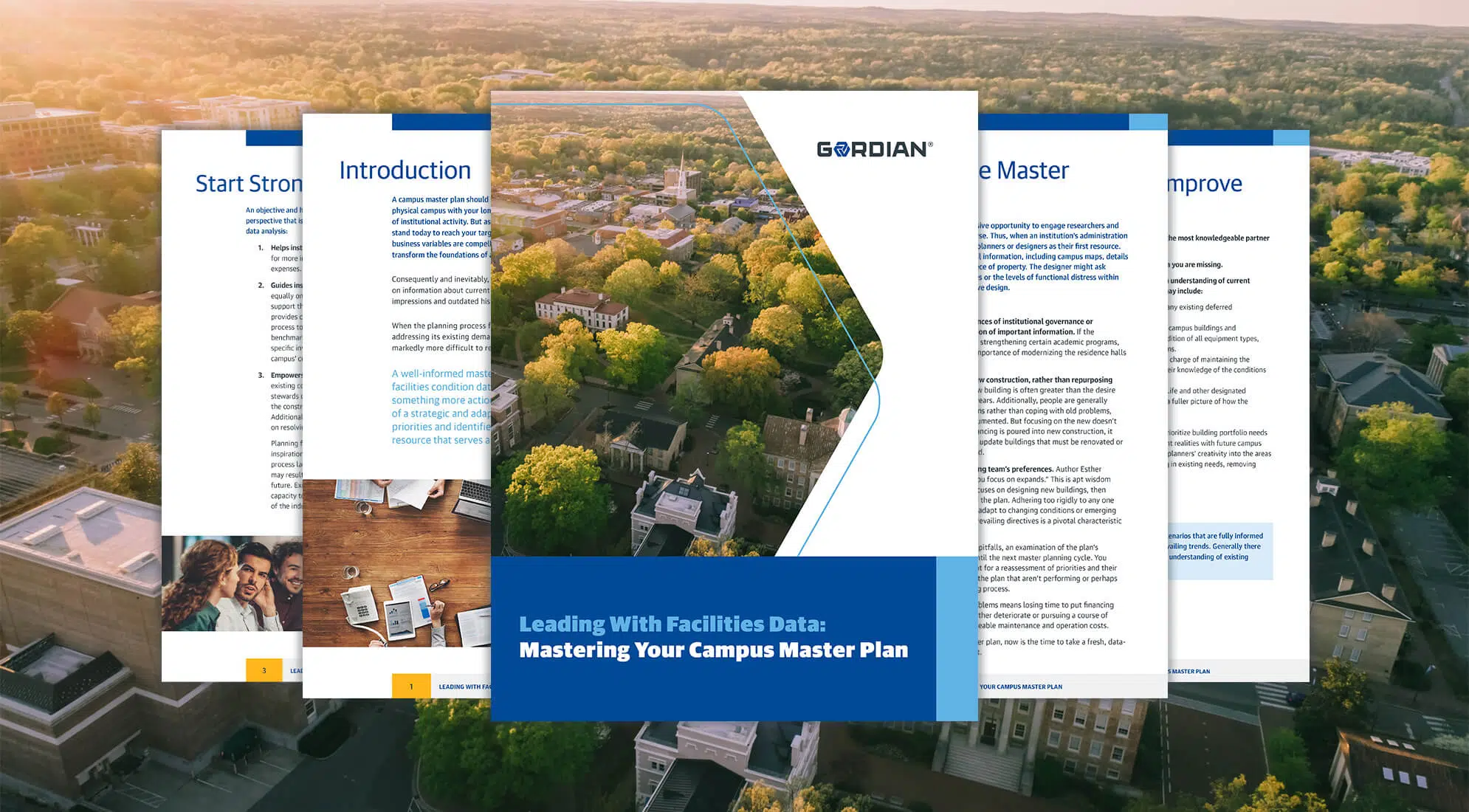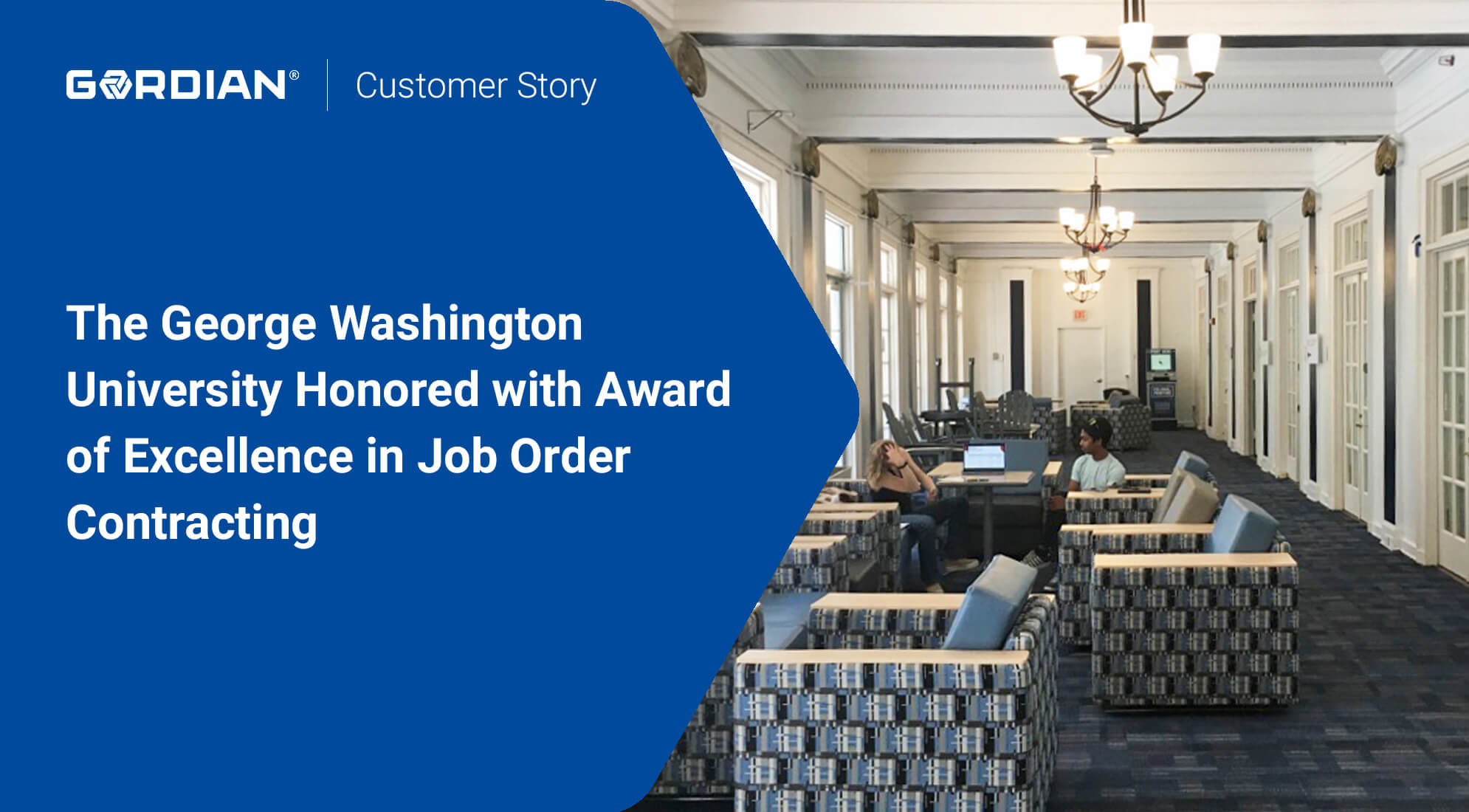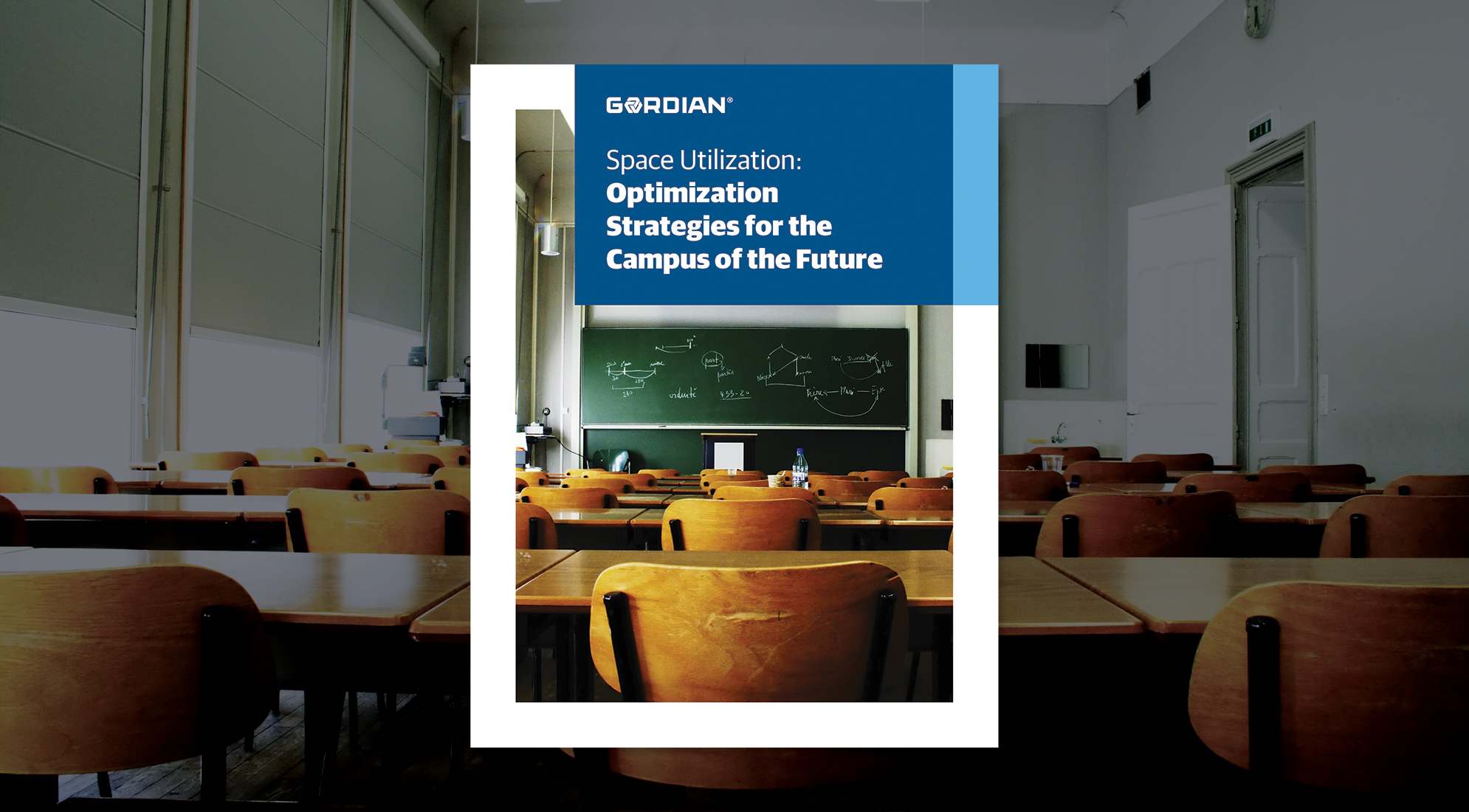Support Campus Mission with Informed Decisions
Aging assets. Sliding enrollment. Chronic underfunding. Colleges and universities are threatened on multiple fronts. Campus leaders must align their efforts if their institutions are going to survive these threats and maintain their place in the higher education landscape.
CFOs, facilities directors and institutional leaders trust Gordian to help them make decisions about using campus spaces, maximizing available funding and prioritizing projects. These efforts result in campus experiences that adapt to learner demands and foster student success.

Create and Effectively Communicate a Rationale for Spending
Capital planning discussions involve a lot of voices. From facilities and finance to faculty, athletics and student life, stakeholders must find common ground for your campus to continue thriving into the future. Gordian’s Return on Physical Assets framework helps you turn “my priorities” into “our priorities.”
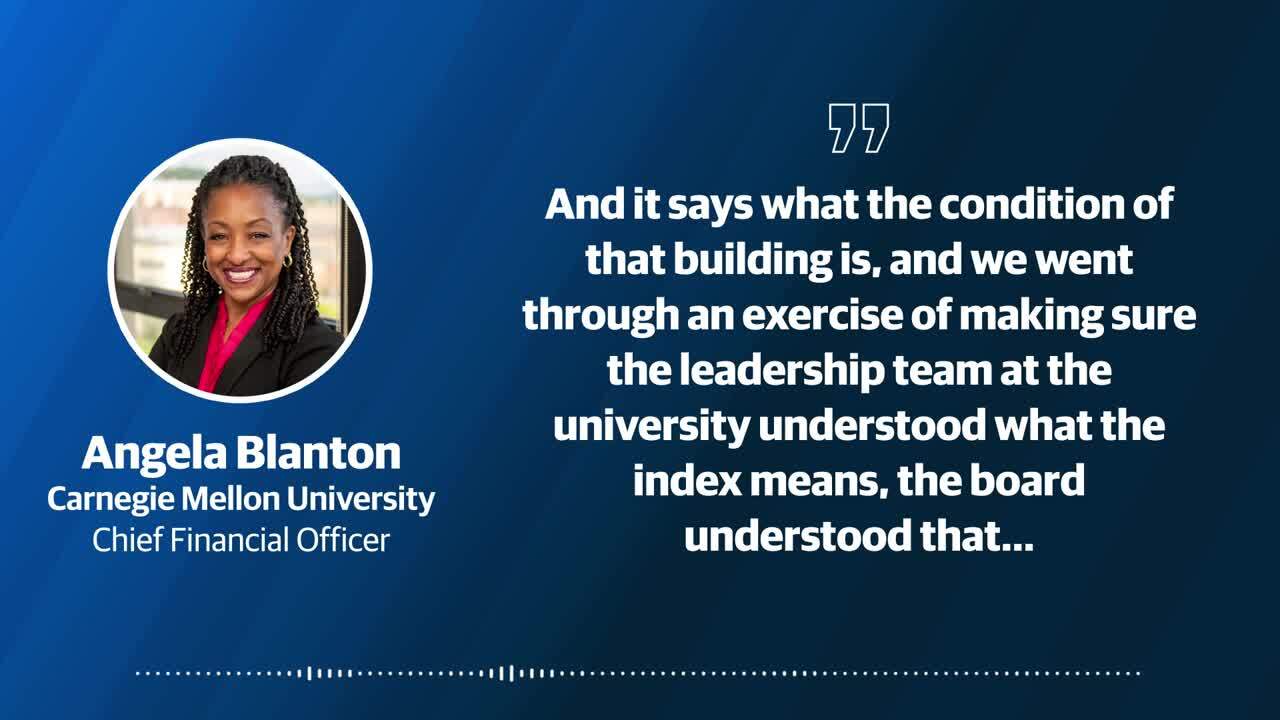
90% of the nation’s largest universities
use Gordian solutions to assess and improve their facilities performance and capital planning solutions

Assess Needs and Create Consensus
Intelligent capital deployments begin with a clear understanding of higher education facilities. It is crucial that institutions address asset conditions in the right order. Gordian’s Assessments and Capital Planning solutions give you the data you need to prioritize your projects to support your campus mission.
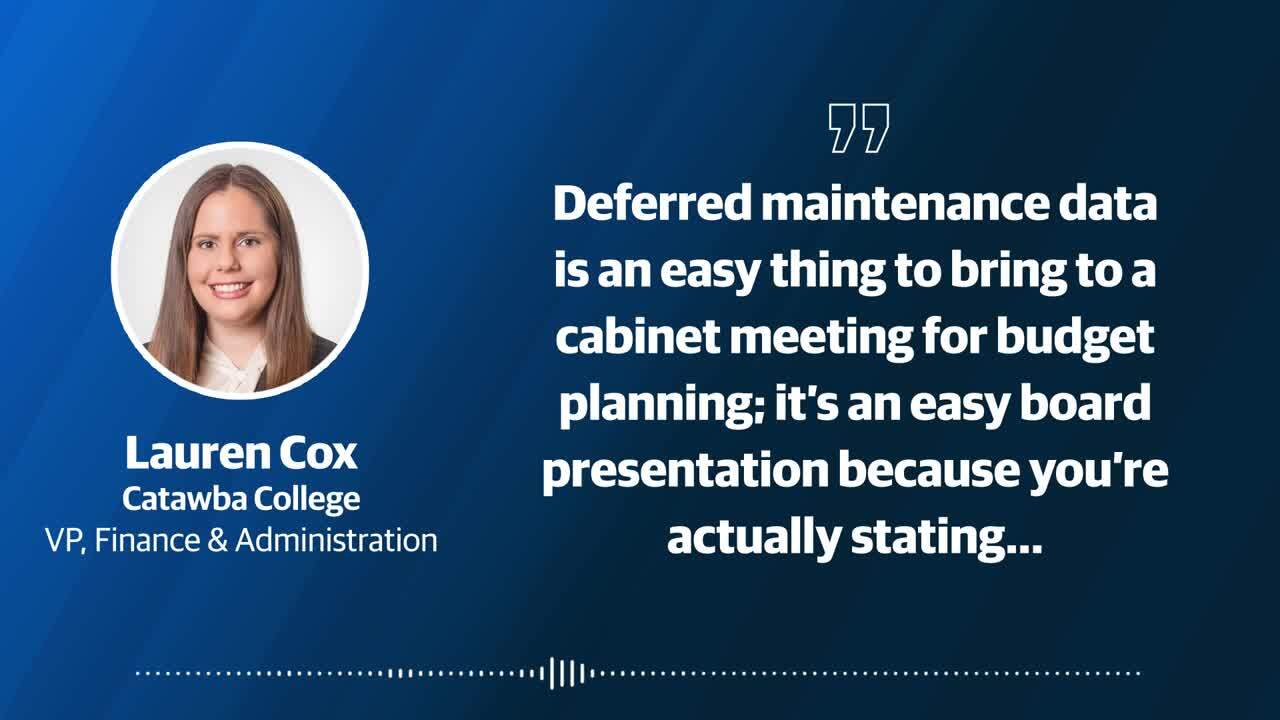
Gordian collects and analyzes
1.42 billion gross square feet
of college and university building data every year

Create an Exceptional Campus Experience
Aesthetics and reliability count when attracting students. Scheduling counts when retaining them. Gordian’s Job Order Contracting (JOC) and Space Occupancy and Room Utilization solutions help you draw out the best of your physical assets and deliver a campus experience that is beyond compare.
Since 1999, the California State University System has relied on Gordian to complete
more than $900 million
in construction volume across its 23 campuses
Gordian’s Building Intelligence™ Solutions empower healthcare organizations like yours to budget, build and maintain their capital-intensive physical assets. See how we can help you effectively manage the building lifecycle and change the future of care.
Gordian’s Facilities Planning Solutions
Gordian’s Construction Procurement Solutions
Gordian’s Asset Optimization Solutions



